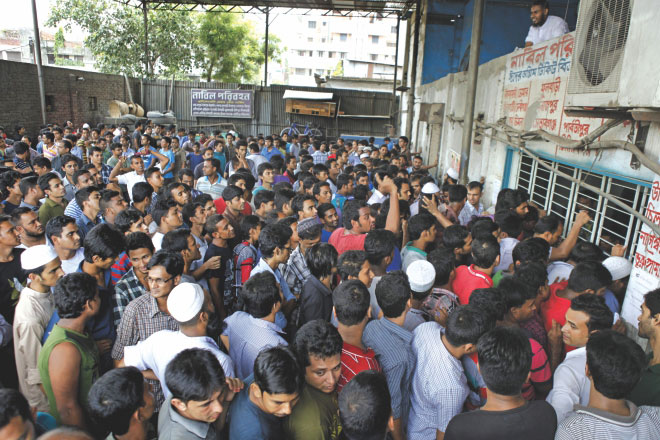Can good service design build customer trust?
Reading Time: 3 minutes
For several years now, we have seen Dhaka repeatedly ranked as one of the least livable cities in the world. One major factor is our transport system. A city of 20 million people, no metro system and an inadequate number of buses create a traffic nightmare. Those who depend on buses suffer the most: drivers pack people into buses, drive aggressively and stop haphazardly, sometimes in the middle of the street. It is almost impossible for women to get a ride during rush hours.
For several years now, we have seen Dhaka repeatedly ranked as one of the least livable cities in the world. One major factor is our transport system. A city of 20 million people, no metro system and an inadequate number of buses create a traffic nightmare. Those who depend on buses suffer the most: drivers pack people into buses, drive aggressively and stop haphazardly, sometimes in the middle of the street. It is almost impossible for women to get a ride during rush hours.
I can clearly remember the first time I saw people standing in an orderly line waiting for a bus. I grew up in Dhaka and took the bus regularly, and I stopped to stare at this scene! A new bus company had recruited some ticket sellers to sit in their stops. The staff also had the responsibility to tell the waiting passengers to form a queue, so that he could easily count tickets. The best part was once people became accustomed to the lines, they often appreciated it: women were hassled less, and people trying to cut in were not tolerated.
There are many services that require waiting or queuing, particularly in conditions of scarcity. Inevitably it creates hassles for everyone- barriers for women to access services, safety concerns for children and the elderly, and in some cases fatal stampedes and chaos. An orderly system seems like it would benefit everyone, so why don’t people organise themselves into lines naturally? Why is the outcome usually an impatient and pushy crowd?
Because these situations often occur in crowded places, many conclude that space limitations and overcrowding are to blame. While these can play into the problem, the central issue lies elsewhere: trust.
In the developing country context, consumer trust can be quite low. Consumers assume that the system is not fair; they may expect that service quality or speediness is determined more by social connections, bribes, or other informal factors. This perception leads everyone to behave in a certain way, particularly if exacerbated by a sense of limited supply or a crowded environment.
By applying human-centered design to these situations, there are frugal and effective ways to reshape the system so that it engenders trust and order, as seen in the earlier example of the bus company.In many cases, the system can be self-reinforcing; after buying into the concept, waiting customers would naturally participate and pressure others to do the same.
What does this look like? Let’s take a common situation in Dhaka: a high-demand services is provided through a single window. Usually the scene is chaotic; one should be prepared to push and elbow their way up to the front.
Problems seen in a chaotic queue:
- Visibility: only those in the front can see the progression
- Challenges: People in the back keep pushing forward to get closer to the window; unclear who gets to go next (probably determined by who moves fastest and most aggressively)
- Mood: impatient, potential for violence, sense of anarchy
- Control: limited; no positive norms
Compare this to the system commonly used in airport security— which uses ropes to loop the line back and forth. This creates universal visibility for all in line, without drastically changing the density of people. People in the back can gauge how long they have to wait and see the line advancing in front of them, giving them comfort that their turn will come in due time. 
- Visibility: Universal
- Challenges: Convincing people to stay in the lines (can be aided by ropes or other boundaries)
- Mood: Patient; sense of progression
- Control: Self-reinforcing; people unlikely to tolerate anyone cutting in
Visibility can magnify trust in a system, and good design can motivate people to enforce positive social norms that help everyone get better service. While here we’ve examined what this looks like in a physical context, the same principles can be applied to many other contexts, including public services. How might a government build more visibility into its service provision? How might BRAC use these principles in how it delivers critical services like microfinance and health?
Our new behavioural insights team is exploring the possibilities. Stay tuned as we share exciting insights from our learnings!
Shazzad Khan is an intervention specialist at BRAC’s behavioural insights team.







